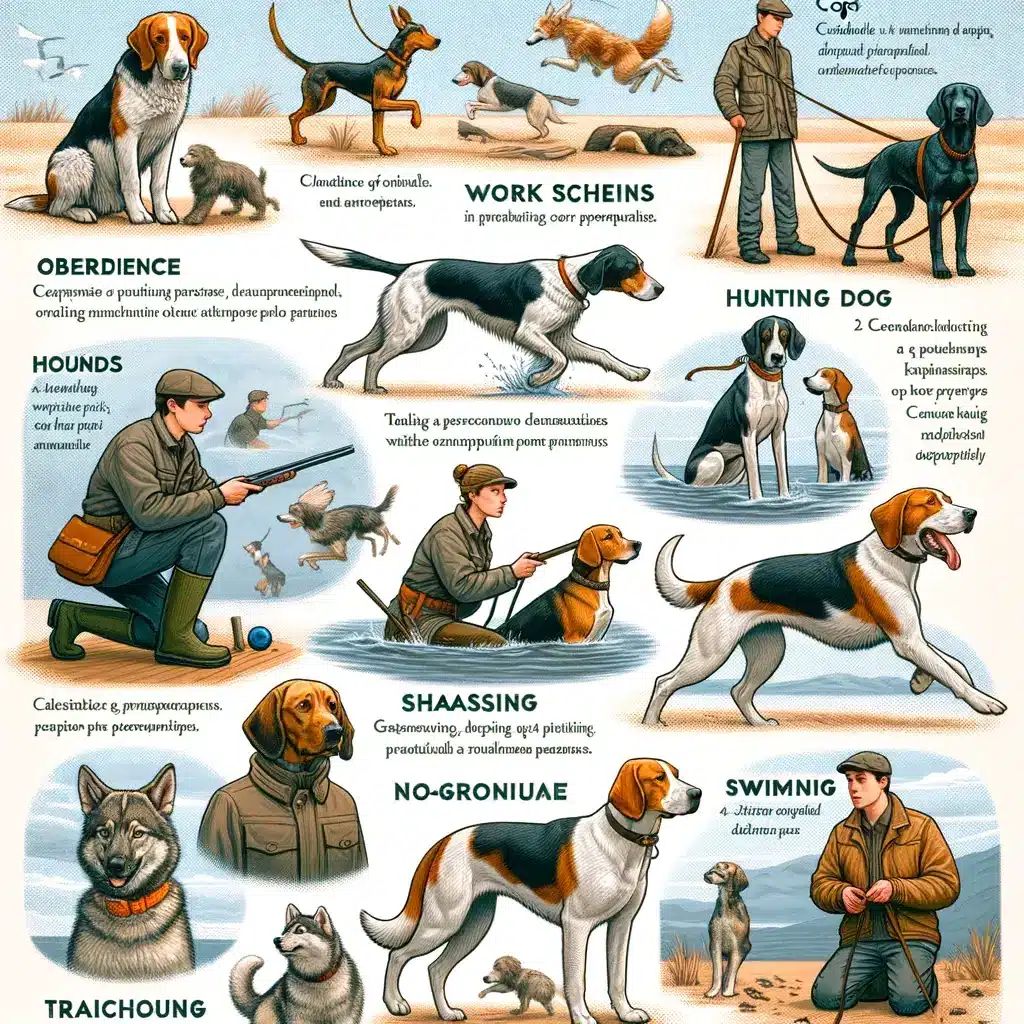Which of the dog owners does not want the pet to be obedient, strong, and hardy? To teach a four-legged friend the necessary skills of discipline, regular training is necessary. Only a well-trained dog will follow all your commands. But do you know how to train a dog?
The main requirement for successful obedience training sessions is an understanding of the natural needs and natural behavior of the dog. Dog training classes allow the dog owner to understand his pet and communicate with him as efficiently as possible. And also this communication will bring pleasure to both the dog and the owner.
So, let’s now learn how to train basic commands to your dog quickly to fix your dog’s unwanted behaviors. For this, you either can hire a dog trainer or train your young dog from a very early age.
Effective dog training involves consistency, patience, and positive reinforcement. Start with basic commands like ‘sit’, ‘stay’, and ‘come’. Reward desired behavior with treats or praise. Gradually expose them to various environments and situations. Remember, socialization is key in training.
Contents
- 1 Benefits Of Training Your Dog
- 2 How Long Does it Take to Train a Dog?
- 3 How to Train a Hunting Dog?
- 4 The Ultimate Dog Training Guide: How to Train a Dog in All Aspects
- 5 How to Train an Older Dog?
- 6 How to Bell Train a Dog?
- 7 How to Train a Dog to Pee on Pad?
- 8 How to Train a Dog to be Protective?
- 9 How to Train a Deaf Dog?
- 10 How to Train a Dog Not to Run Away?
- 11 How to Train Your Dog to Ignore Other Dogs?
- 12 How to Teach a Dog to Bow?
- 13 How to Teach a Dog to Swim?
- 14 How to Teach a Dog to Lay Down?
- 15 FINAL WORDS
Benefits Of Training Your Dog
Like kids, the dog needs teaching. Untrained canines don’t follow the owner, damage many things, go to the toilet anywhere, chase other animals, run away for a walk, and generally lead to many problems and trouble for their owner.
For your dog to behave civilly, unquestioningly carry out all the commands, and not do stupid things during walking, you should train your dog properly
Most dogs have no manners, and their owners are at a loss as to how to teach their dogs manners. As a result, these unfortunate owners often yell at the poor dogs or spank the frightened dog.
Worse still, when dogs do not adjust and are sent to the basement or backyard to live out their days alone; they’ll be taken to an orphanage because the owner is just incapable to handle their out-of-control dog.
The obedience training process would prevent many of these problems and bad puppy behavior. Many people think that training skills are just about teaching a good dog to follow certain commands. But if we dig deeper, we will be closer to the real definition:
Obedience training teaches a dog not only to be obedient but to do everything he is told to do. It covers a wide range of commands, and skills a dog learns, including tricks, specific needs of a family or individual family members (companion or guide dog for disabled owners), guarding and hunting skills, and more.
Below are the most common benefits of dog training classes
- In dogs, training develops the basic good manners that every dog owner wants their dog to have, from greeting the guest politely on their arrival into the house to walking nicely on a leash, running when called, to following new commands.
- Initial puppy training courses with a good trainer enable your dog to be the right new member of the family right from a young age. Puppy training classes develop the skills of interaction with other puppies, and with people, and skills of behavior in new situations.
- As practice has shown over many hundreds of years, training is one of the most important things that bind a dog to your home “forever” and allow it to understand every single command of the owner.
- Puppy socialization is critical to the psychological health of adult dogs. However, with the proper teaching, your dog won’t have difficulties socializing with other dogs, or humans.
- With the help of a proper doggy training class not only help the dog but also help the dog owners. Because dog owners can also acquire skills and knowledge for raising and training their pets during training sessions, which later helps them correct or even prevent their dog’s bad behavior promptly using only hand signals.
- A well-trained dog can understand the verbal cue of the owner and act accordingly.
- When your friends come to your home, there is no need to lock a well-behaved dog in another room for fear that it will interfere. If your dog loves participating in family children’s games or enjoying time with the humane society, without the risk that she will do something wrong with the child or other people around then you can easily take him to visit friends or relatives, go hiking, swimming and involve your dog in other joint family activities.
- Through training, a strong mutual bond is created, and the relationship you share with your dog is strengthened and enriched. Is there anything better? So, make sure to teach your dog today.
- A trained and educated dog is the best gift for all of you!
No matter what age you start training your dog, a basic training course provides the foundation for any activity, behavior, or job that you want your dog to be able to do. And for this, whenever you see your dog performs well, treat him with his favorite dog-safe treat or just pat the dog’s head to encourage him.
In case you need assistance getting started, merging with a certified trainer will help you as well as your dog work as a good team and will also allow you to learn training mastery that will stay with you for a lifetime.
Basic Rules Of Training Your Dog
- One person should teach young puppies commands. It is not necessary to engage all family members in training a pet.
- You need to train your dog’s behavior in a good mood. Negative emotions and irritability of the owner won’t help you establish friendly contact with the dog and achieve positive results in crate training. Dogs learn quickly when their owners teach them in a good mood.
- Think over the training program, taking the nature of your dog into account.
- Training can only be done when the dog is in good physical shape. You can not train dogs that have a lethargic appearance and any health problems.
- End your clicker training with praise for every success and, of course, don’t forget to reward your dog with her favorite treat. She will appreciate it and will look forward to the next lesson.
There are many methods of dog training: pointing, pushing, imitation, playful and defensive behavior, passive flexion, reduction of a behavioral act, etc. Such methods are more often used by professional cynologists.
An ordinary dog breeder who wants to teach his pet different commands can choose the easiest way to learn – motivation with an incentive to perform a certain action, where the motivational element is a tasty treat or the dog’s favorite toy.
The imitation method is relevant for training young puppies if the family already has an adult-trained dog that will set a good role model for the younger generation.
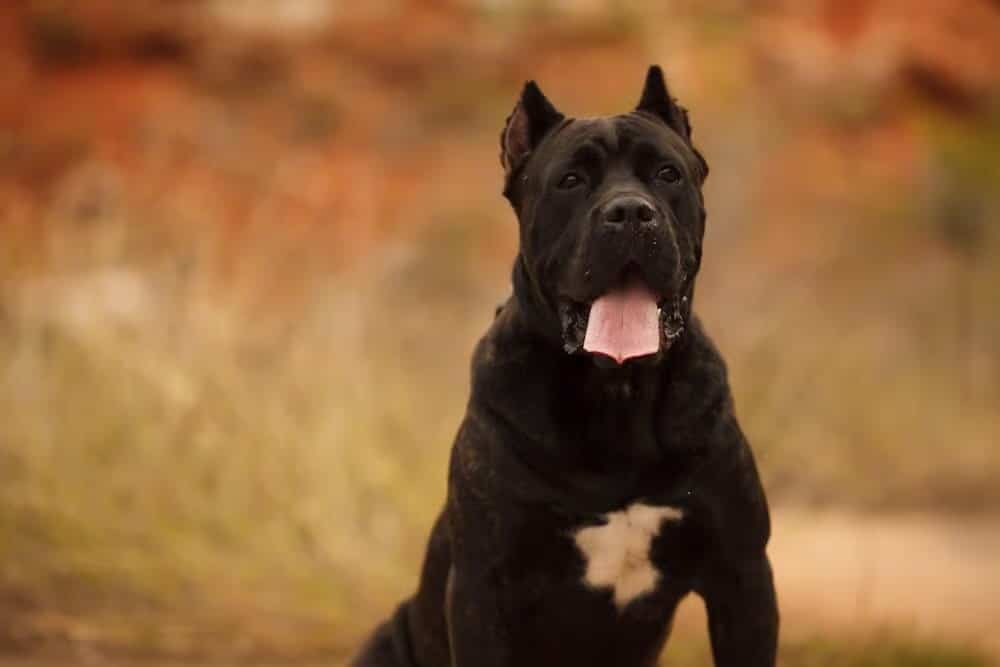
How Long Does it Take to Train a Dog?
Experts say that it takes about 5-7 days for the average dog to learn one simple command. The time depends on the individual abilities of the dog breed. But here you will need to repeat the command with the dog so many times.
The main thing is to adhere to the principle of consistency. You need to train one command first, and flawlessly, and only then move on to the next stage. Training must be completed from simple to complex.
Training is the formation of conditioned reflexes in a dog. Keep in mind that without constant repetition, the reflex will fade. Repetition is the mother of learning, without it, the dog will forget everything. Consequently, it will take longer for your dog to learn even the easiest task. With consistency, you can easily teach your dog new behavior and they can even solve problems easily if you continue repeating the training.
Well, the last. Perhaps you are not the best teacher in the world, in which case, of course, it is best to give your pet to be raised by specialists. But choose them carefully. If you just need a well-mannered dog that is comfortable to walk and live with and you want specialists to take care of your dog, do not believe the advertisement, which says: “We will make your dog obedient in 1 working day.”
Another rule: Training should be limited in time. To make your dog willingly continue to engage, use encouragement and continue repeating the practices. This way, your dog will learn faster.
How to Train a Hunting Dog?
Training of dogs of hunting breeds is distinguished by its specificity and various techniques that are used for each group. The training of cops and spaniels is called nataska, hounds – chasing, greyhounds, huskies, and burrows – priming, huskies for small animals and birds – nagirovanie.
It is important to teach hunting dogs excellent obedience, working with an animal, overcoming obstacles with a game in their mouths, the ability to swim, take shots calmly, behave quietly when tracking down an animal, and follow the hunter’s prearranged signals. When any animal appears, the dog must indicate this by its behavior, but in no case should it be distracted.
Things You Need to Know For Training A Hunting Dog
Here are a few essential points that will help you train a hunting dog quickly and effectively.
Be Consistent
You should be consistent and clear in your commands so that your dog can understand what you are trying to explain to them or what you want them to do.
Train with Dog Treat or Reward
A treat or reward is a more powerful instigator for hunter dogs than praise. It does not matter if you are giving your dog big treats or small ones, it will certainly motivate your dog to pay attention to the commands.
Keep It Short
Teaching your dog for a long time won’t help. You should keep it short and continue repeating the practices daily.
Be Patient
Don’t lose hope if your dog is taking longer than other’s dogs. If you can stay patient and consistent then your dog will learn everything that you want him to learn. So, just be patient.
The Ultimate Dog Training Guide: How to Train a Dog in All Aspects
Any dog can learn a basic set of commands. First, you need to attract her attention by naming a nickname or holding out your hand. After each performance, treat your four-legged friend with a treat or praise. So, here is how you can train your dog in all aspects
- Sit- You’ll need a short leash and a treat for training. Raise your hand while holding a treat and command Sit to your dog. After that, nudge the dog’s back while bringing the collar up a little. Give him a dog treat once he’s in his ideal position.
- Stand- Give the order to “Sit” first. After that, while saying “Stand,” hoist the dog while holding him under the tail.
- Lie Down- You can teach your dog the “Lay down” command once it has mastered the “Sit” and “Stand” instructions. Pull the dog leash down once she is seated. A flat position for your pet is a must. And, remember to give praise.
- Walk- Together with the other commands, the puppy will also recall this one. When he performs any command, like “Sit!” or “Stand!” – simply say “Walk!” as well as allow the dog to go. Repeat this command, clap your hands, or take a small step back if that doesn’t work.
- To Me- Tell your dog, “To me!” as he approaches you. Next use toys or treats or other items that draw attention to call your pet. You aim to have them call find you and come to you without seeing you.
- Give me a paw- Sit in front of the dog and hold a treat in one closed hand – he should try to get it. First, he will use his muzzle, then he will try to use his paw. At this moment, give the command: “Give a paw!” and take it in your hand during your dog training sessions.
- Keep Quiet- If your dog starts barking, distract him with treats or a squeaker ball. When the pet stops barking, say: “Quiet!” and encourage him.
How to Train an Older Dog?
Teaching adult dog commands is harder than a young puppy. If the dog came to you from a shelter or other owners, while being an adult, remember that this dog has already experienced a lot. Usually, dogs have been trained all their lives, and even older pets sometimes need to be trained regularly.
Training Method
But if an adult dog has come to you or your pet has begun to behave undesirably, training is indispensable. There are a few points that should be considered when training an adult dog:
- The optimal lesson time is no more than 10-15 minutes. So the dog will not get tired. Practice commands no more than 3 to 5 times.
- The constant consolidation of the learned commands is the key to success. During one training session, practice 1-3 commands, and do not forget to repeat the topics covered.
- If there is a catastrophic lack of time for training, how to teach an adult dog commands? Teach your adult pet commands anywhere and anytime. For example, before eating, give simple commands, this will always keep the shaggy one in good shape.
- Conduct training at different times of the day (so that the animal can navigate both day and night), in different locations. A change of scenery and time will strengthen skills well.
And the most important thing to always remember is that adult dogs, like people, can be trained worse than representatives of the younger generation. However, patience and perseverance will help to achieve a good result.
Also, remember that the training of an adult dog should exclude any violent methods. Bullying can lead to serious consequences. If you raise your hand to a pet, he will become afraid not only of you but of everyone who is nearby. For example, if a child comes up to pet him, the animal will think that they want to hit him. The dog will be scared and may even bite. Therefore, you cannot teach commands to an adult dog with aggressive methods.
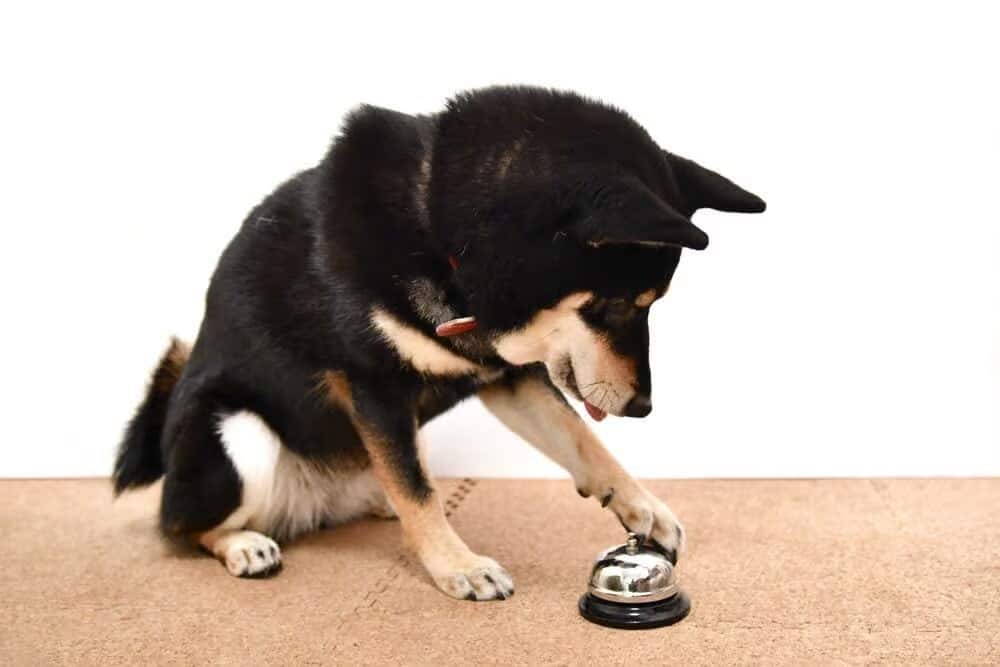
How to Bell Train a Dog?
Teaching a dog or puppy how to ring a bell to go outside to use the toilet is a great achievement and a very useful skill for pets living in the house. This skill will prevent annoying barking if the dog wants to go outside. You will always learn about the dog’s desire.
The bells will prevent claws from scratching the door, as the dog will stop scratching on the door when it wants to get out.
Instructions to Bell Train Your Dog
- First of all, hold the bell strap near the dog’s nose.
- As soon as the dog touches the bell with its nose, praise it with a word and give it a treat.
- Repeat this step until your dog or puppy can touch the bells with his nose whenever you say “touch” or “bell”
- After enough repetitions, your puppy or dog will learn that when he touches the bells with your nose, you will open the door.
- When the dog rings the bell, take him to a place where he can do his business.
- After she goes to the toilet, reward her with a treat.
- If she does her business, take her back home right away.
- Repeat this procedure until the animal understands that the bells on the door are only to inform the owner about going to the toilet.
- Remember that puppies have a short memory, so the training should be repeated several times a day.

How to Train a Dog to Pee on Pad?
Utilizing pee pads might assist in teaching your dog where it is OK to pee. Of course, your puppy will need to be trained to use a pee pad because this isn’t a natural behavior. The key training method here is consistency, which you can utilize to finally educate your puppy to relieve himself outside.
In case you do not know what to do, pee training a puppy might be challenging, but there are various tools you can use to encourage your puppy to relieve itself in the places you want it to. Here check out the method to train your dog to pee on a pad only and not anywhere else in your house.
Instructions to Train Your Dog To Pee On Pad
- The first step is to choose a place where you can place the pad for your dog. Make sure that the pad is not placed in the house’s main seating, walking, or eating areas. However, you also need to make sure that the pad isn’t placed far away from your dog so they can’t reach the pad whenever nature calls.
- Once you find out the perfect place for placing the pee pad, it is time to introduce the pee pad to your dog. Let your dog smell and touch the pad to get them familiar with the pee pad
- After introducing your dog to the pee pad, start using commands such as “go pee” or “pee here” so that your dog understands the purpose of the pee pad
- However, there is a high chance that your pup won’t immediately learn this.
- So, take your dog to the pee pad whenever you think your dog needs to pee
- Thus, your dog will get habituated to the practice and will stick to the routine whenever he feels the urge to pee.
How to Train a Dog to be Protective?
It’s no secret that a dog is man’s most faithful and devoted friend. But, in addition to cute walks, communication, and support, the dog can provide other useful functions, such as protection from danger. Now there is even a separate profession, like a bodyguard-dog. But to achieve effective protection against danger, you need to conduct appropriate and rather complex training.
You can teach a dog to protect its owner or defend itself by practicing regular command. Often, an experienced cynologist is invited for this, but it is also possible to conduct training yourself. And about how to teach a dog to protect the owner, we will talk further. But remember these points before you train your dog to be protective
- You can start from the age of six months, but better – from one and a half years;
- Training is conducted in an open area, but without strangers (except for an assistant or dog handler) and other irritants;
- Two hours before class, you need to feed the dog, and walk 20-30 minutes before;
- The duration of training is no more than half an hour, so as not to tire the puppy;
- You should not conduct classes if the dog is in a bad mood or is sick.
Training Methods
The proper actions that you can follow to make your dog protective are mentioned here.
- During the dog training, make sure that your dog understands the basic differences between attacking and protecting
- This will help your dog become protective and not attacking
- If you see your dog is going to attack, stop him by passing commands like “Stop” or stop him forcefully
- To become protective, your dog must learn how to bark at the danger
- Always keep in mind that teaching your dog to bark does not mean that your dog can bark at every single stranger he notices on the road. Control this by using appropriate commands during training.
- For this, use commands such as “Bark” and start barking yourself at the source of the threats. This will help your dog get a vivid idea about the time to bark.
- The dog may not begin barking for the first time, thus, repeat the procedure until your dog barks.
- Treat your dog whenever he recognizes the threats and bark at the threats.
How to Train a Deaf Dog?
Often people think that deaf dogs are very difficult to train. However, dogs generally use vision and body language as their means of communication. This means that any canine, including deaf dogs, can be easily taught signs. When teaching a deaf dog, concentrate on the sharp senses that the dog has, not the ones he lacks. Teaching your hearing-impaired pet will help you and your pet understands each other and keep the relationship at peace.
Training Method
- Learn gestures for training
- Choose multiple gestures and use them consistently
- Accompany gestures with voice commands
- Coordinate facial expressions with gestures
- Limit the duration of your training sessions
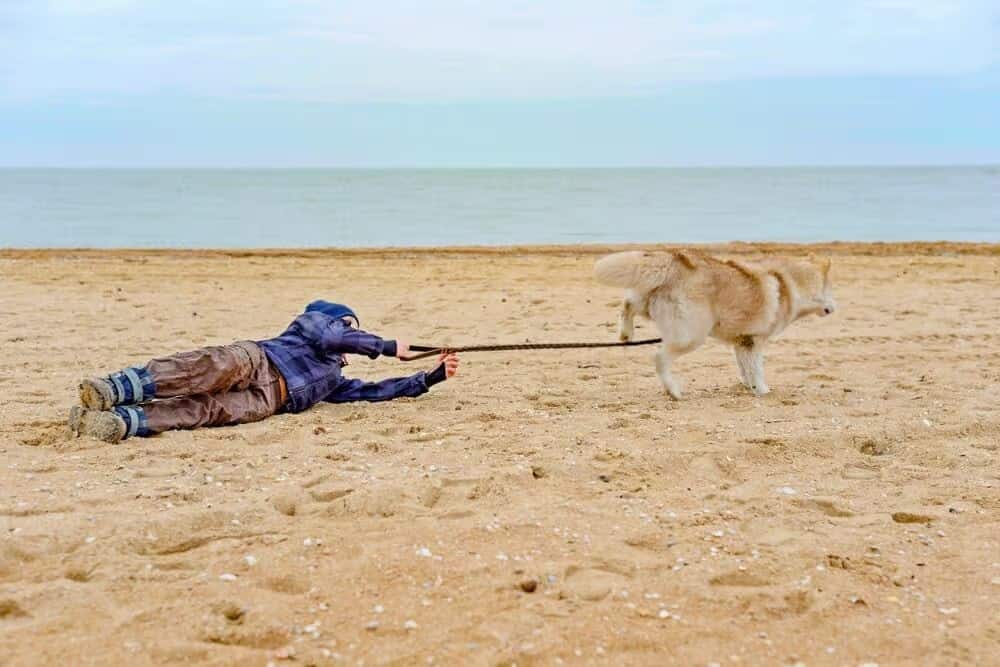
How to Train a Dog Not to Run Away?
It is worth remembering that some breeds of dogs were bred for hunting, so they cannot do without training, because they will constantly run away. Before you start teaching your dog not to run away, you need to understand what it might be about. Next, we will look at the reasons why a beloved pet may try to run away.
Training Method
If your dog has ever been lost, you know how intimidating and stressful this situation can be. But you can take some measures to limit your pet’s ability to escape:
- Check your yard and the fence around it to make sure there is no way for the dog to escape. Check for holes in and under the fence, and for any devices in the yard that can help the dog climb over the fence.
- If you’re dealing with a jumper, the American Kennel Club recommends installing rolls on top of the fence in the form of pipes strung on an aluminum rod. If the dog jumps to the top of the fence, he will not be able to grab onto the rotating pipe with his paws.
- Consider building or hiring someone to build a dog kennel, which is a lockable fenced area inside a yard where your pet can run around as much as they want.
- Before you leave your dog in the yard, take him for a long walk or some other form of exercise. Leave toys for her to play with. If the pet has something to do and by the time you need to leave him, he has already spent a lot of energy, he is unlikely to be interested in the idea of escape and is unlikely to find the strength to implement it.
- Try to find opportunities to be outside with your pet. If it’s raining or you want the dog to walk on his own, stand by the door and watch him, calling out if you suddenly notice that he is about to chase the rodent out of the yard.
The American Kennel Club recommends not punishing a dog if it does run away: “It won’t make it want to run away, but it will make it afraid to go home.” When a dog runs away on a walk, the owner sometimes does not know what to do. Nevertheless, you need to be patient and take care of raising a pet.
How to Train Your Dog to Ignore Other Dogs?
A friendly dog - a sign of a balanced temperament and proper socialization – is what every dog owner strives for. But what if the dog gets overly excited, loses control, jumps, barks, and runs in circles when you have other dogs over? Or does your dog behave aggressively with passers-by on a walk, lunges, pulls on the leash, barks, and growl? Or just behaving obsessively toward other dogs?
Whatever one may say, your dog needs to know how to behave around other dogs to avoid misunderstandings and injury. Your dog will need to learn to be calm, obedient, and quiet around other dogs. A confident, controlled dog will not keep barking, becoming hyperactive, jumping, or being aggressive with other dogs.
Training Method
For the first training sessions, it is better to choose quieter places so that the dog remembers your commands and is not distracted by other dogs. And when the dog is well acquainted with your commands, you can move on to a more difficult level of training in the presence of “other dogs” and other distractions.
- To teach your dog to behave appropriately and remain calm when meeting other dogs, you should not punish him for his explosive reaction, shouting, and pulling on the leash – this creates even more excitement and anxiety and will worsen the dog’s behavior.
- The dog may be excited about meeting other dogs, but he must respond to your commands, not be afraid and feel confident.
- Teach your dog the basic commands – stand, sit, lie down, beside, etc. Work out at home first, then make your workouts more difficult by taking them outside and adding other dogs to the process.
- Be patient – every dog has its own pace. Be persistent, but fair, then the result will not be long in coming.
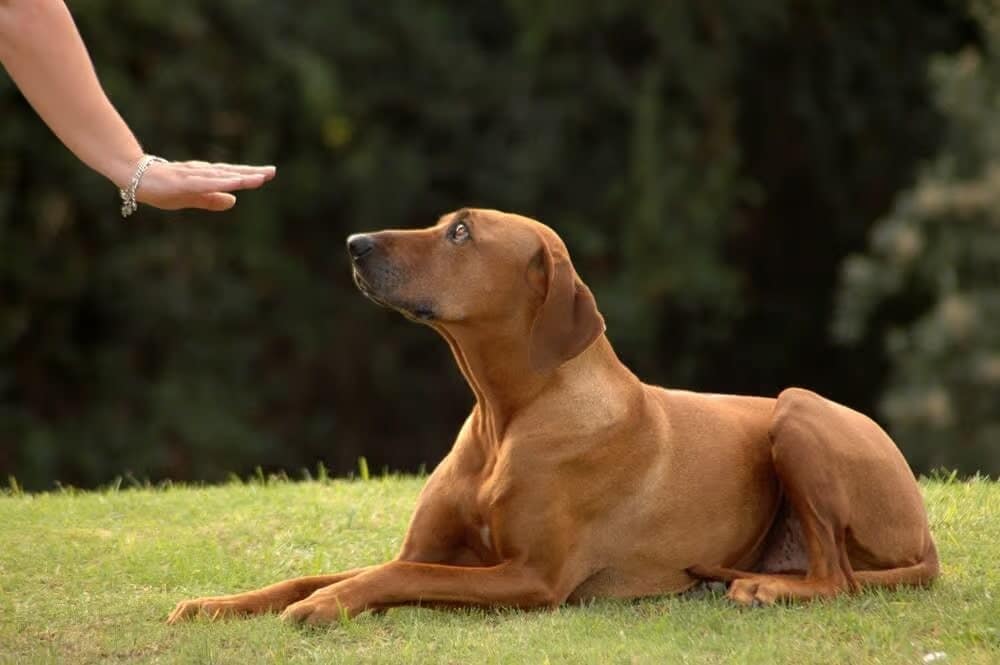
How to Teach a Dog to Bow?
On the command “Bow”, the dog should raise its back, lower the front paws down and rest on the ground. This position is often adopted by the dog on its own, for example, when stretching or being invited to play, so it is not particularly difficult for them. Let’s see how to teach your dog the bow command.
Training Method
Where to begin? Your dog stands on all four legs. It is good if the dog already knows the “stand” command on demand. If she has not yet mastered this command, then it is better to work on it before moving on to the second step. Once your dog masters the Stand command, follow these steps to train him to bow down.
- Hold a treat in front of the very tip of your dog’s nose and slowly lower it down, pressing it against your dog’s nose. You need to “lure” the dog with a treat until his elbows are on the ground. The hind limbs must remain motionless, i.e. stand still.
- Hold the dog in this position for a few seconds.
- As soon as the dog has taken the desired position, immediately praise him, and say “yes” or “good”. Then feed a treat.
- Repeat this action several times.
- As soon as the dog understands what you want from him, start repeating the “bow” command.
- Practice the command with your dog several times a day, but no more than 5 minutes each time. Do not forget to reward your pet after each correctly performed action.
How to Teach a Dog to Swim?
Nothing is as refreshing as a dip in a cool pool! If you have never bathed with a dog before and are not sure if he can swim, teaching this is not so difficult. Before you dive into the pool with your dog, you need to do a little research: find out what genetics say about a dog’s relationship to water.
Training Method
To teach your dog to swim, it is best to follow several guidelines.
- Safety First: Before swimming lessons, find a life jacket that will protect your dog without restricting its movement. Train your dog to wear it.
- Encourage exploration: Install an empty children’s pool outside. Take your dog in a life jacket to the pool so he can scout everything. Praise her for exploring the pool, offer to climb inside, and reward her if she obeys. Keep practicing and remember that learning can take time.
- Just add water: add warm water to the pool – not too much, just enough so that a couple of dog toys can float on the surface. Encourage your pet to get into the pool. Keep practicing, adding a little more water each time, so that the dog feels more confident at greater depths.
- Consider flotation aids: While you are training your dog to water, you can try rafts or air mattresses that can support the animal’s weight. They will help the pet get used to swimming while being above the surface of the water.
As soon as the dog feels comfortable, he is ready for swimming lessons! Head to a safe place where you can quickly get your dog ashore if he gets excited or tired.
How to Teach a Dog to Lay Down?
The sooner training begins, the better, as teaching a puppy the “down” command is much easier than teaching an adult dog. It is worth moving on to learning this command after the puppy has mastered the “sit” command well.
Training Method
- For dog training, you will need a treat, a leash, and a collar.
- After the puppy has sat down, bring a treat to his nose, and at the moment when he reaches for it, say the command “down”. Lower your hand down and forward, at the same time lightly pressing on the withers.
- If the puppy obeyed, reward him with a treat and praise him with stroking, while repeating the phrase: “well, lie down.”
- If the dog starts to get up without your command, repeat the steps with a treat and encourage the puppy to lie down a second time. Reward the puppy only after re-laying.
- Stroking the puppy along the withers and along the back to the tail, lightly press it to the floor or ground, holding it in a prone position for a while. At the same time, give a treat with the other hand and repeat the “down” command.
- Try not to repeat the word “lie down” too often. Give only one command and get it done every time. Otherwise, your dog will only obey the second or third time.
You may have to repeat this exercise more than once before the puppy starts to lie down on command, but be consistent and do not stop training until the skill is fully mastered.
FINAL WORDS
Dogs are different from humans, they have their own special needs and instincts. They communicate differently than we humans do, and much of their normal behavior is unacceptable to us.
But, we must not only teach them how to fit into our house but also teach ourselves to understand their needs so that we can accommodate them and adjust our expectations to make a better coexistence for both species: dog and human. If we don’t hurry to train our dogs and educate ourselves, we’ll both be disappointed and not as happy as we could be.

